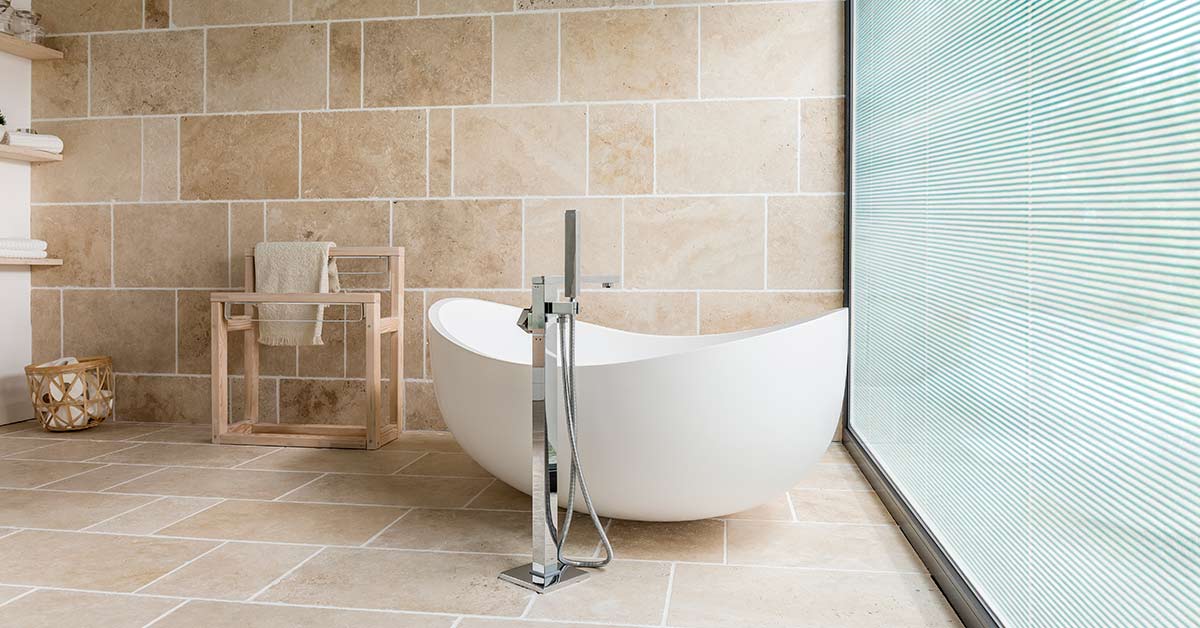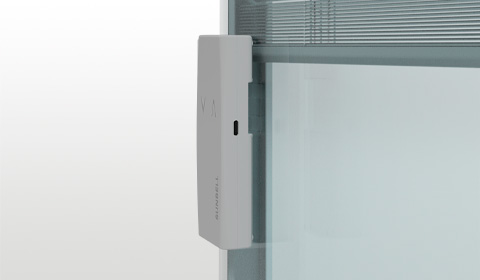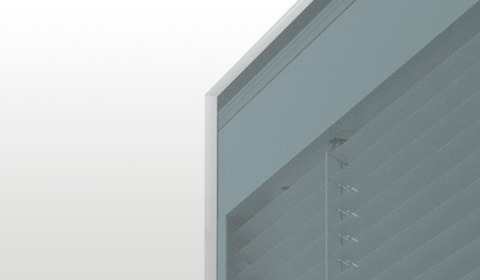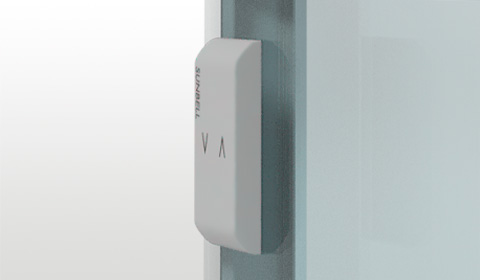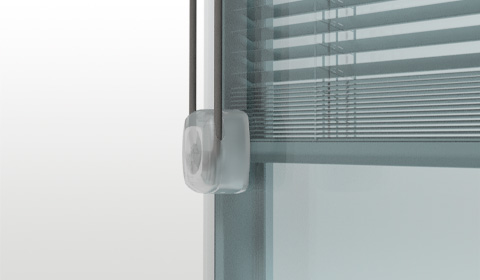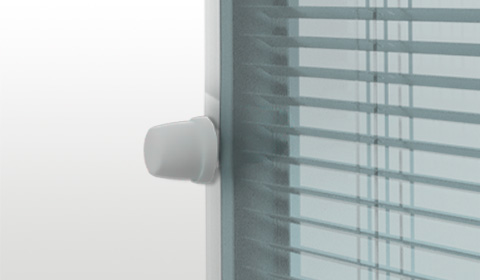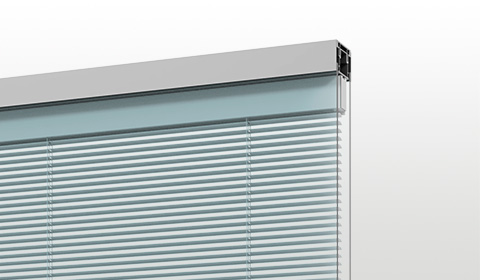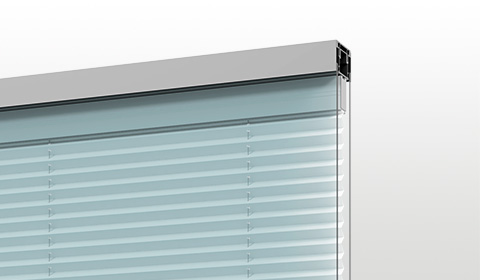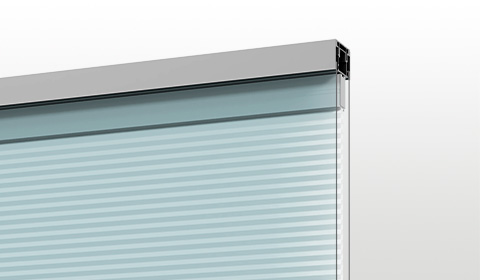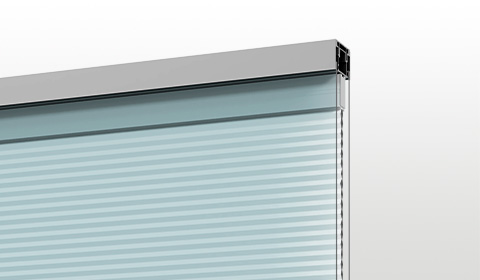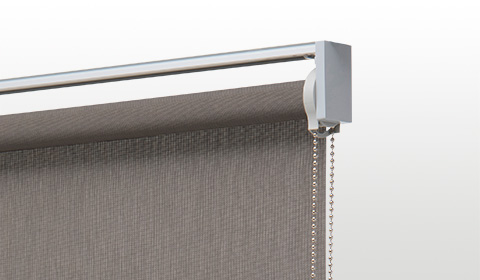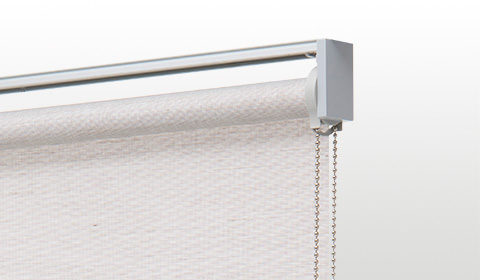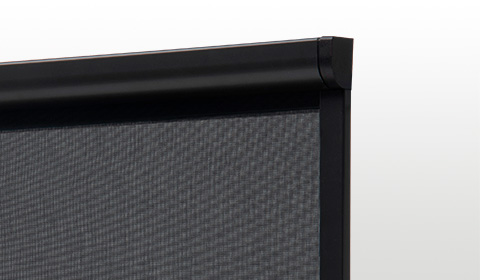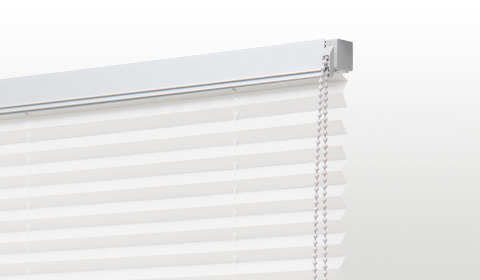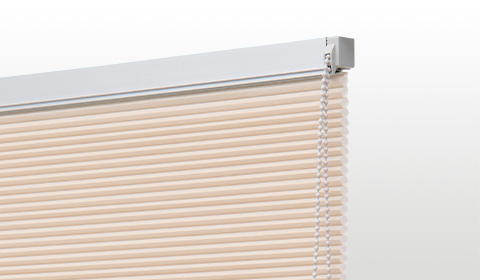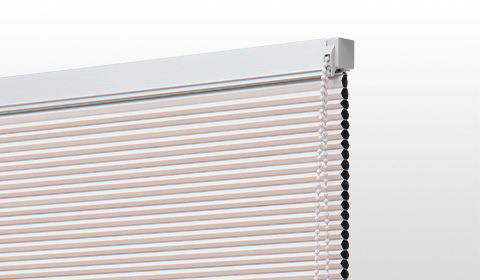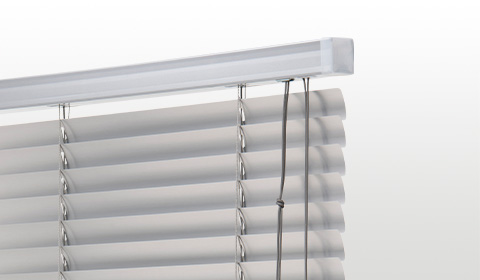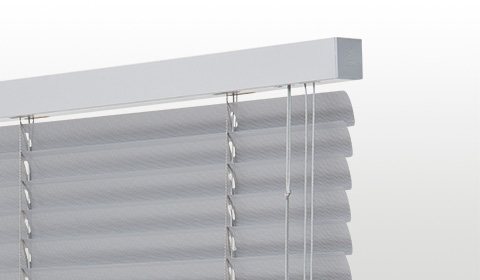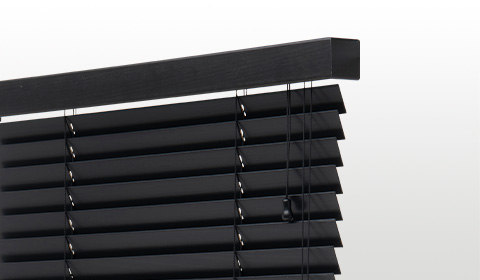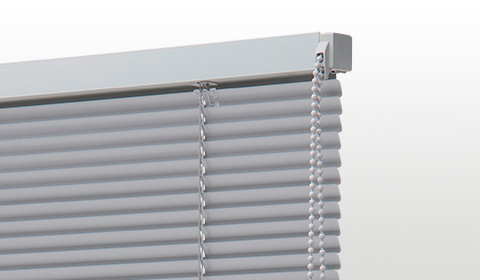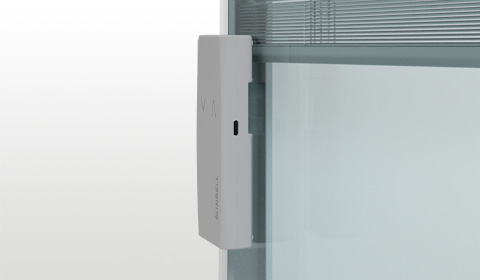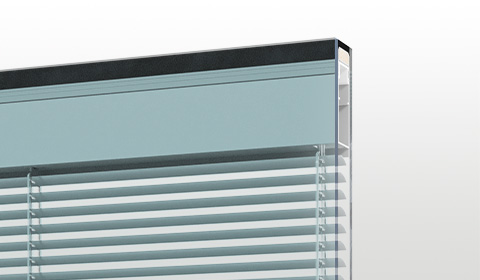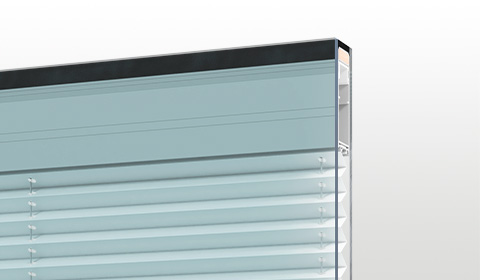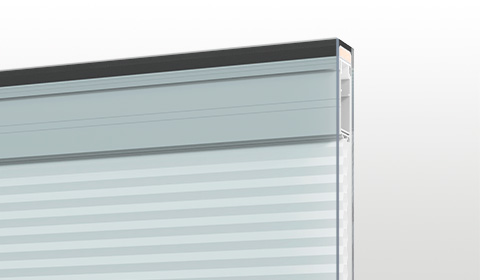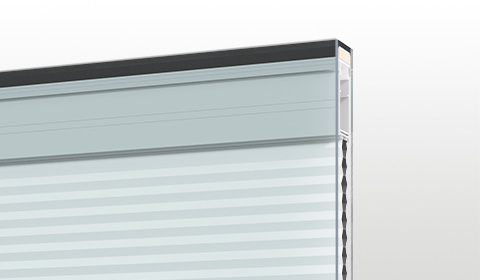Almost all windows need a covering for various purposes, such as providing privacy, protecting against the sun, regulating the diffusion of light, or simply for design reasons.
The venetian blind is probably the most practical solution of all the types on the market, as it perfectly meets these requirements.
Its unique style has become increasingly popular over the past few years, earning it pride of place not only on our windows but also as an important central element in interior design projects.
That’s why we decided to provide you with a comprehensive overview of venetian blinds in a practical buyer’s guide.
What are venetian blinds?
Venetian blinds consist of thin, flat horizontal slats made of aluminium, wood or PVC, which are suspended by cords that keep them spaced at regular intervals across the width of the window.
They can be raised or lowered easily and (very importantly) their angle can be adjusted for easy control over the level of privacy and the amount of light allowed into the room.
Venetian blinds are simple to operate; they are usually raised and lowered using pull cords and tilted with cords or a rod. Nowadays, however, they are sold with many other innovative solutions, such as remote-controlled automatic operation.
Versatile and practical, venetian blinds are available in a wide range of sizes and colours.
The origins of venetian blinds
Considering their name, it would be logical to think that venetian blinds originated in Venice, but this is not the case.
In reality, it is difficult to pinpoint exactly when and where venetian blinds were invented because, since ancient times, people have used frames made of wooden slats, tied together with wires, to protect themselves from light and heat.
The ancient Chinese and Egyptians used bamboo canes to keep their houses shaded, thus escaping the heat of the sun, and although there are no sources for an exact time of the invention of modern venetian blinds, we can say that history documents their use in the form we know today as early as the mid-eighteenth century.
Some historical research suggests that the modern Venetian blind has Persian origins and that its popularity grew and spread across Europe thanks to trade routes from Asia and the Middle East, eventually arriving at Europe’s main port: Venice.
In the 18th century, venetian blinds were first introduced in France and then in England and the Americas and were very successful.
Modern manufacturing techniques in the early 20th century led to a boom in the popularity of aluminium blinds, so much so that in New York in the 1930s there wasn’t an office that didn’t have venetian blinds installed!
Nowadays, venetian blinds can be found in homes all over the world, in different materials and colours.
The advantages of venetian blinds
In addition to the attractiveness, style and colour effects offered by venetian blinds, other practical features should convince you to install them in your home or office.
As already mentioned, by adjusting the slats, venetian blinds provide full control of the illumination levels in your home and good levels of privacy.
On a bright, sunny day, simply tilt the slats and the light will be diffused less directly, reducing glare and overheating without completely blocking the entry of light, as happens with other blinds.
In addition, they allow an optimal level of thermal comfort to be achieved and help to protect furniture and textiles from fading.
Similarly, the angle of the slats also allows the desired level of privacy to be achieved.
Venetian blinds also have economic advantages in terms of energy savings, as they provide better thermal insulation, reduce draughts and provide protection from heat during the warmer months, keeping interiors cool and comfortable.
The main differences between wooden and aluminium venetian blinds
The biggest difference between wooden and aluminium external venetian blinds is the thickness and weight of the slats.
Aluminium slats are less than a millimetre thick and very light, while wooden slats are on average about 2.5 mm thick and weigh a little more.
Wooden and aluminium venetian blinds are assembled and constructed in exactly the same way, so their function is also the same, and both types offer variety and versatility in terms of colour.
This means that in terms of ease of use, variety and style, there is no difference between wooden and aluminium blinds.
The only big difference is in weight and ease of cleaning.
Venetian blinds require regular cleaning and maintenance to keep them dust-free and in optimal working order.
Both types can be easily cleaned, but the rigidity of wooden slats makes them easier to clean than the much thinner aluminium slats.
In any case, neither model has any disadvantages compared to the other, so a lot depends on your taste, the style of your home and your furnishings.
Wooden venetian blinds go better with a classic style, for example, and aluminium venetian blinds with a modern one.
Venetian blinds are suitable for kitchens, bathrooms or damp environments
Venetian blinds are very practical and functional for both kitchens and bathrooms, for several reasons. The bathroom, for example, is a room that requires a very high level of privacy but also needs good light.
The kitchen, on the other hand, is a room where you spend a great deal of time, and you need to manage brightness, privacy, ventilation and cleanliness in a practical way.
Cleaning venetian blinds
The perceived difficulty in cleaning and maintaining venetian blinds is very often an obstacle and a deterrent to purchase.
In fact, the versatility, style and ease of use offered by venetian blinds far outweigh the minor cleaning issues, which, like everything else, only require a little care and attention.
They can be difficult to clean if dust and dirt are allowed to accumulate and they are not cleared of grime regularly, but if they are cleaned periodically, e.g. weekly, the problem vanishes and the blinds will have a long life.
Any dirt on the slats can be easily removed with a soft, damp cloth.
Integrated venetian blinds in double-glazing
As we have seen many times before in our blog, there are also so-called integrated venetian blinds, a very innovative and technologically advanced solution.
In this case, the blind is sealed inside the double-glazing, i.e. in the gap between the two panes of glass that make up the window.
In addition to the advantages of light management and privacy, which are typical of venetian blinds outside the glass, integrated venetian blinds in double glazing provide greater energy savings and require almost no maintenance. Because the blind is sealed inside the glazing, it does not accumulate dust or dirt, which eliminates this problem.
Apart from the manual system, several automated, rechargeable battery-operated models with a wireless magnetic actuator are available.
Conclusion
With this guide to buying interior venetian blinds, we hope we have helped to clarify your ideas and provided you with the information you need to choose the most suitable product for your needs.
We recommend that you take a look at our website to discover all of Sunbell’s solutions.

